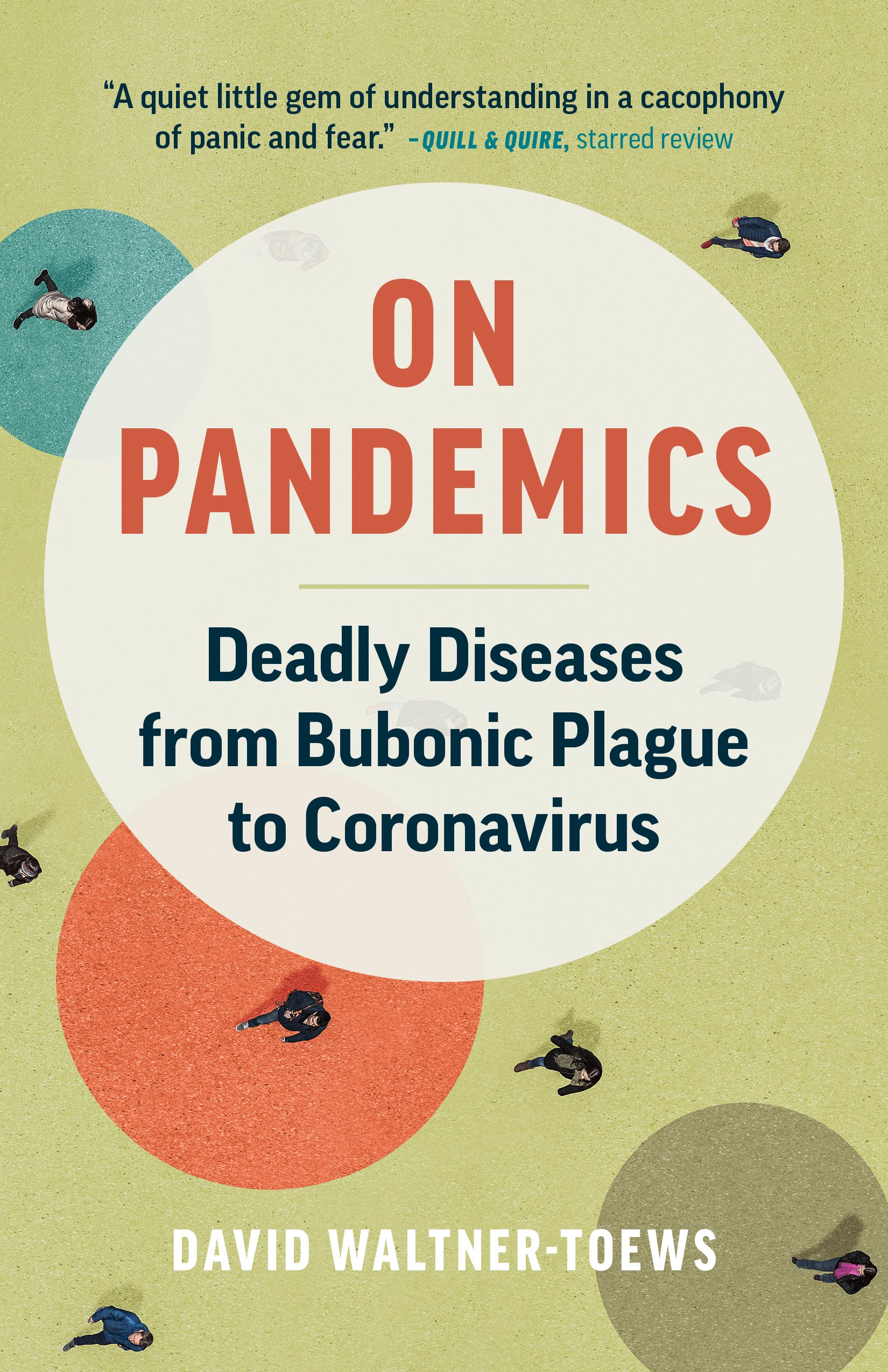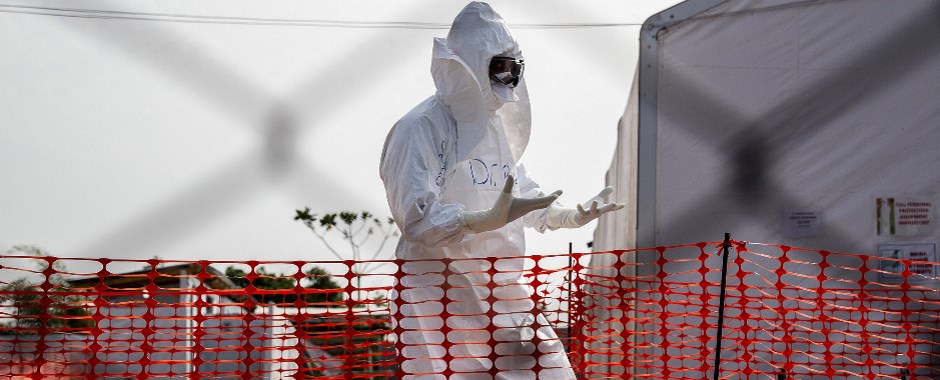What do bubonic plague, Lyme disease, Ebola, Marburg disease, Nipah, sleeping sickness, Lassa fever, avian influenza, Western equine encephalitis, SARS and COVID-19 have in common? All are zoonotic diseases, ones that have jumped from animals to humans. Not all have turned into pandemics – where a disease spreads across multiple countries – but some certainly have pandemic potential, and many cause crippling disease and death. This list is just a few of well over a hundred zoonoses that affect humans, and the numbers are increasing.
 A new book (actually an update of an old one) – On Pandemics: Deadly Diseases from Bubonic Plague to Coronavirus – discusses all these diseases and more, with new material exploring the COVID-19 story, bringing it right up to date. It’s a must-read, even if you’ve read the first edition. It is written by the brilliant David Waltner-Toews – veterinarian, development worker, novelist, poet and general polymath – in his typically colourful, engaging style. To give an example, one of the chapters is titled: ‘Splashing through Rat Piss: Leptospires and Hantaviruses’. You get the picture.
A new book (actually an update of an old one) – On Pandemics: Deadly Diseases from Bubonic Plague to Coronavirus – discusses all these diseases and more, with new material exploring the COVID-19 story, bringing it right up to date. It’s a must-read, even if you’ve read the first edition. It is written by the brilliant David Waltner-Toews – veterinarian, development worker, novelist, poet and general polymath – in his typically colourful, engaging style. To give an example, one of the chapters is titled: ‘Splashing through Rat Piss: Leptospires and Hantaviruses’. You get the picture.
However, with his technical background, he is also unusually careful (for a popular book) about terminology. This is important, as words do matter. He comments on the dangers of naming diseases, and then casting aspersions on a place or animal that may have no justification. He clarifies what we mean by terms such outbreak, epidemic, pandemic, infection or disease, noting for instance you can have a pandemic (that spreads) and causes infection but doesn’t cause disease.
Why zoonoses matter
What David is able to do throughout the book is bring what might for some be a dry, narrow, technical subject to life, and show – through example after example – why we must take zoonoses seriously. He illustrates how climate change, economic development, urbanisation processes, changes in human diets and our love of pets, for example, all affect whether we get a disease or not, or whether a virus is able to jump into humans and be maintained. Insights range from virology to ecology to sociology to politics, but as the cases show, they all must be connected in a more integrated science that can address this complexity head on.
As David says in the new introduction, “the world is more chaotic, less predictable, than we would like to believe.” Yes, a major new pandemic on the scale we are seeing today has long been predicted. But not now, in this form, with these still unfolding consequences. The expectation was that the next ‘big one’ would come from an influenza, like the Spanish flu, not an unstable coronavirus, via a circuitous, as-yet-unknown route from a wild animal. Because we must live with zoonoses – as we have always done, but perhaps now in greater proximity – we need to come to an accommodation with them, the book argues.
This means avoiding the macho rhetoric of eradication (this is not going to work), but thinking about how to live with viruses and other disease agents. For the future, he argues, “We might find ways of negotiating with them, of accommodating each other’s needs, engaging in minor, stylized skirmishes, with a reasonable death toll on all sides.” For the twenty-first century, we need “a new common sense, a kind of solidarity of other people, and other species, informed by careful attention to this amazing planet we share.”
In response, what the book argues for is a new type of approach to health – what David and others have called ‘ecohealth’, and others brand ‘One Health’ – where human, animal and ecosystem health are seen together. Responses in this approach are not narrowed by a disciplinary medical or veterinary science, but are informed by a diversity of knowledges, not least of those living with disease, managing animals, altering habitats, hunting wildlife, keeping pets and so on. This requires, David argues, developing an acute sense of “peripheral vision”, looking out for other people, animals and the planet.
For, as discussed in Chapter 2 of the book, when not in the midst of a pandemic (as we are now with COVID-19) we are in what the World Health Organisation terms an ‘inter-pandemic phase’. There is always the prospect of a new pandemic, and it is the space between when we have to ensure our “peripheral vision” is emphasised and our “common sense” practices are heightened to be prepared. In our desperation to be beyond lockdowns, we crave ‘normality’, but the world of zoonotic disease does not allow for stability. Turbulence, uncertainty and unknowability are the norm, and we just have to get used to it.
Models, prediction and preparing for pandemics
All this requires a new type of science. As David comments in relation to the COVID-19 pandemic, “If SARS-COV-2 (the virus that causes the COVID-19 disease) has taught us anything at all, it’s that even our best quantitative, scientific measurements cannot give us all the answers we want.” Back in March, I reflected on this theme in relation to the UK response, and the failure of a particular type of modelling. As the book argues so forcefully, it’s not that conventional scientific approaches are worthless – mathematical disease modelling, epidemiological surveys and the rest have a place – but they need to be contextualised in a wider understanding that takes uncertainty and complexity very seriously.
Take COVID-19: in chapter 10, David argues that we must not just focus on the Wuhan seafood market and bats, but think about what resulted in an increased demand in the city for other sources meat during 2019. The answer: two other animal diseases, African Swine Flu and avian influenza, had wiped out 200 million pigs across China (or at least the veterinary ‘stamping out’ programme had done so) and thousands of chickens (which were culled in intensive poultry units in nearby Hubei province). Genetic testing suggests the intermediary hosts may be pangolins who got the virus from bats, or maybe snakes. With pangolin being a luxury meat for humans, the virus just hopped over, found a new host, and spread from there. A chance episode, with huge consequence: the flapping of the butterfly’s wing of complexity science.
Could it have been predicted? No. Could we have been better prepared? Definitely, yes. This requires, David argues, a perspective that Silvio Funtowicz and Jerry Ravetz call ‘post-normal science’. This is where “facts are uncertain, values are in dispute, stakes are high and decisions are urgent” (see another recent STEPS blog on COVID-19 that takes this approach). This requires a democratisation of and humility in science, along with the heightened ‘peripheral vision’ that caring for people and the planet requires. Cartesian, reductionist science is necessary to understand the genetics, virology and epidemiology, but it’s simply not enough.
This is because pandemics are embedded in complex, uncertain, global socio-ecological webs and relationships, David argues. How do we develop a narrative, a way of thinking and acting that responds effectively? The book concludes that this “requires good theory, risky social engagement, and a willingness to live creatively with unresolved arguments and tensions”; in other words, a new science for the age of pandemics. And it is this sort of science that will allow us to prepare during the inter-pandemic period, and how we will survive the next pandemic.
Book information
On Pandemics: Deadly Diseases from Bubonic Plague to Coronavirus by David Waltner-Toews is published by Greystone Books (Vancouver/Berkeley) and is available to buy online from the publishers.
More on covid-19
To read more commentary and publications from the STEPS Centre on pandemics, COVID-19 and more, see our collection of resources.
